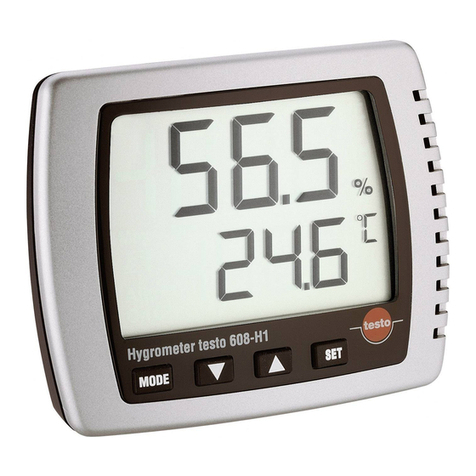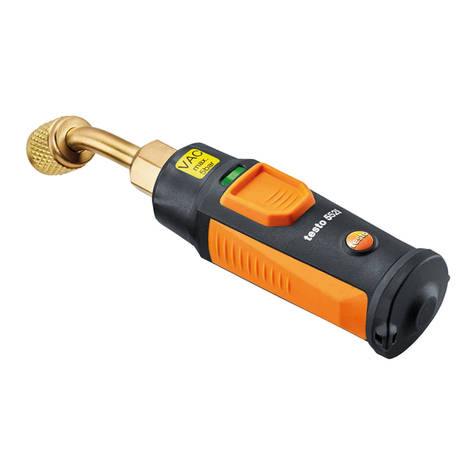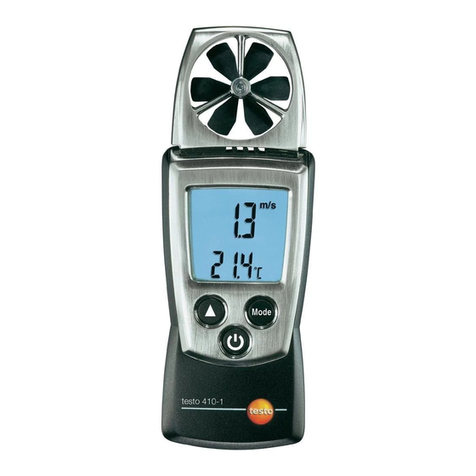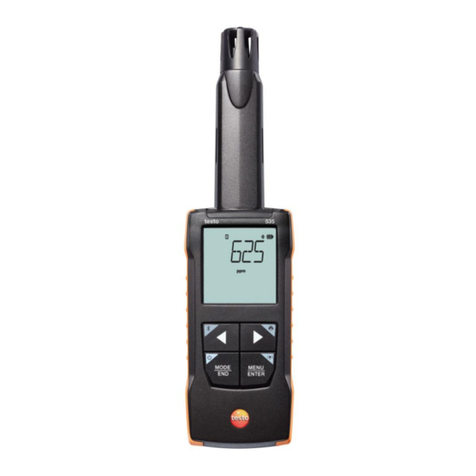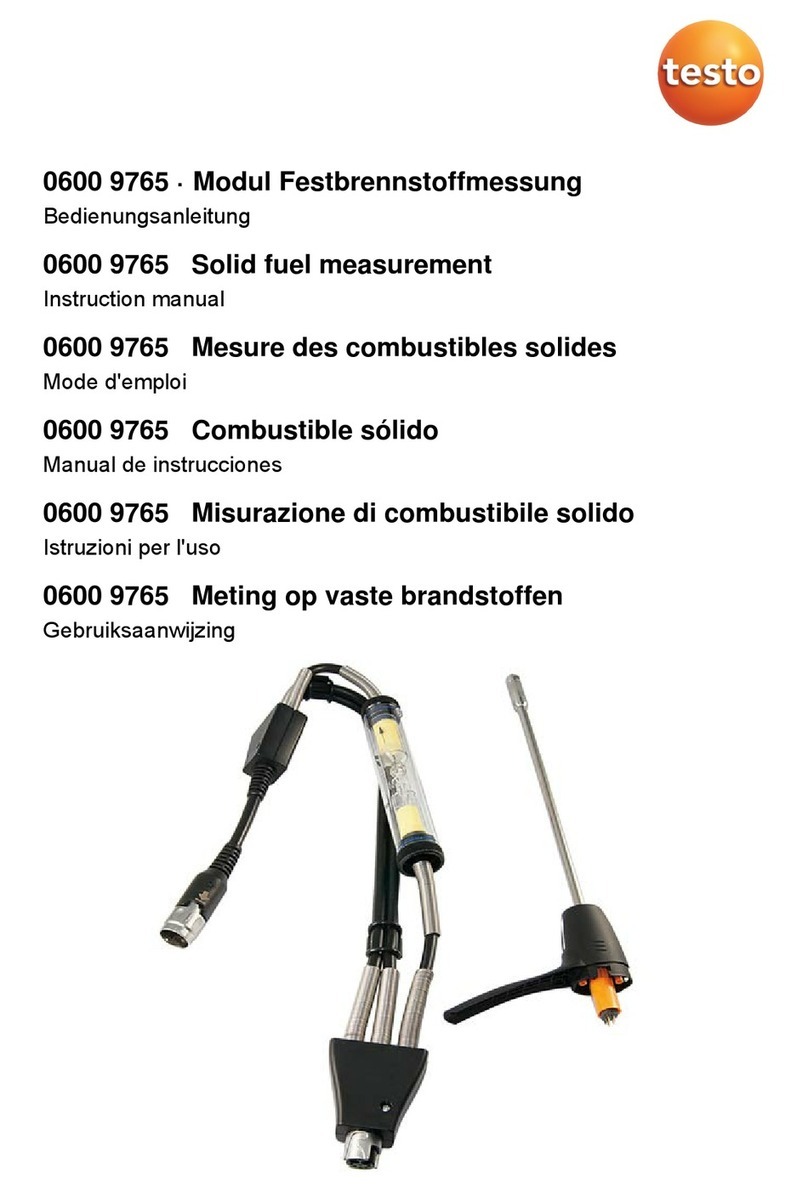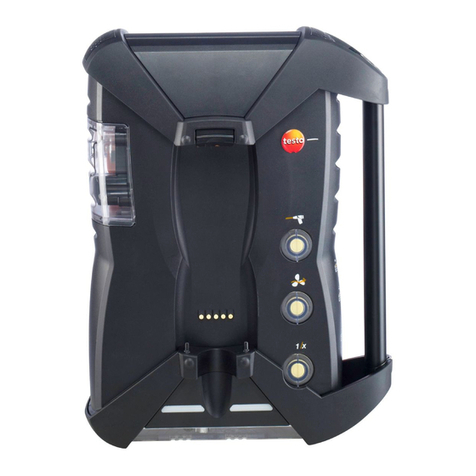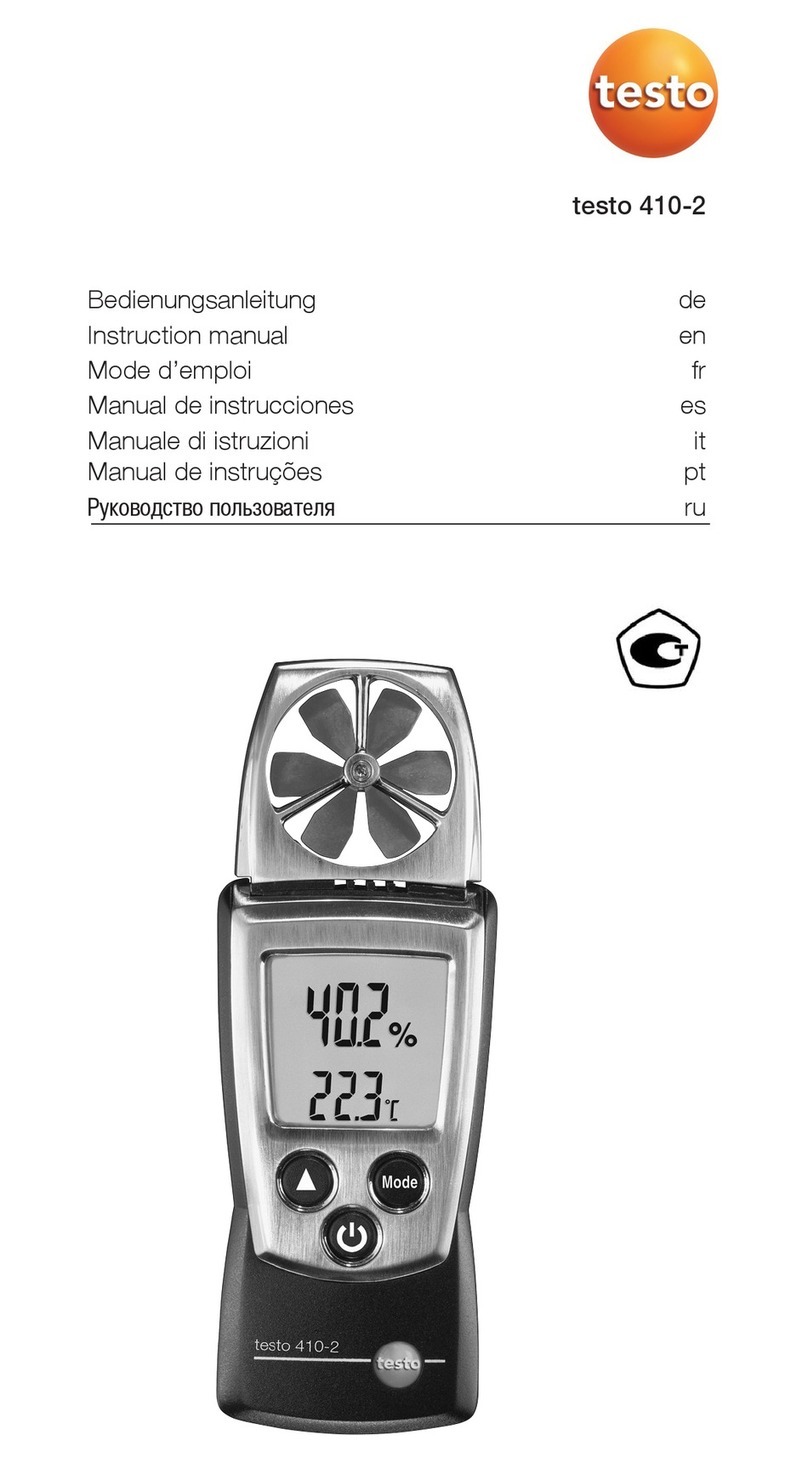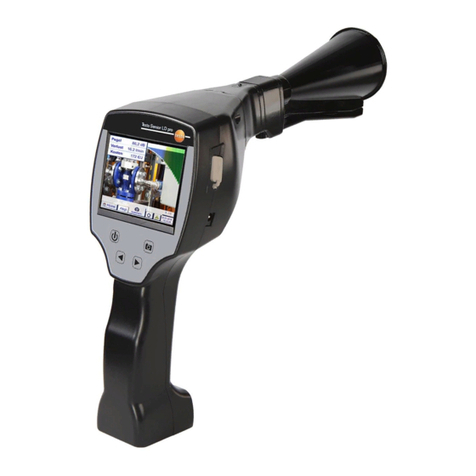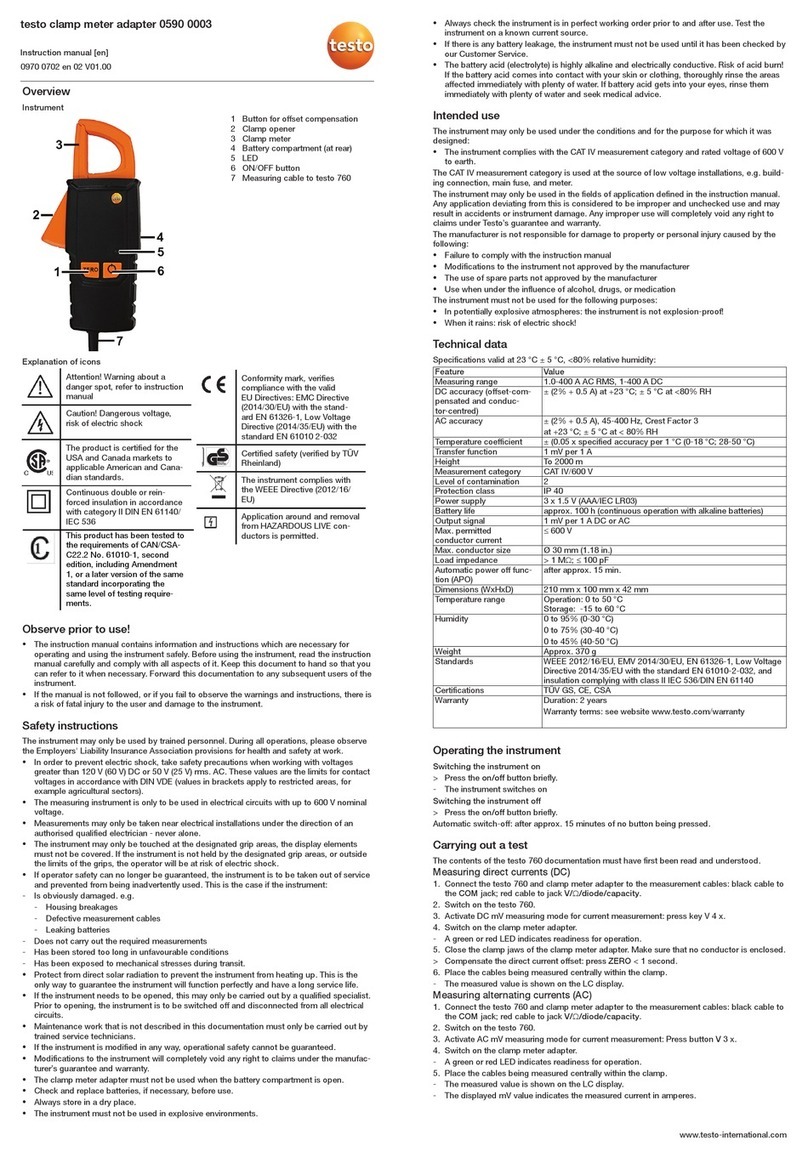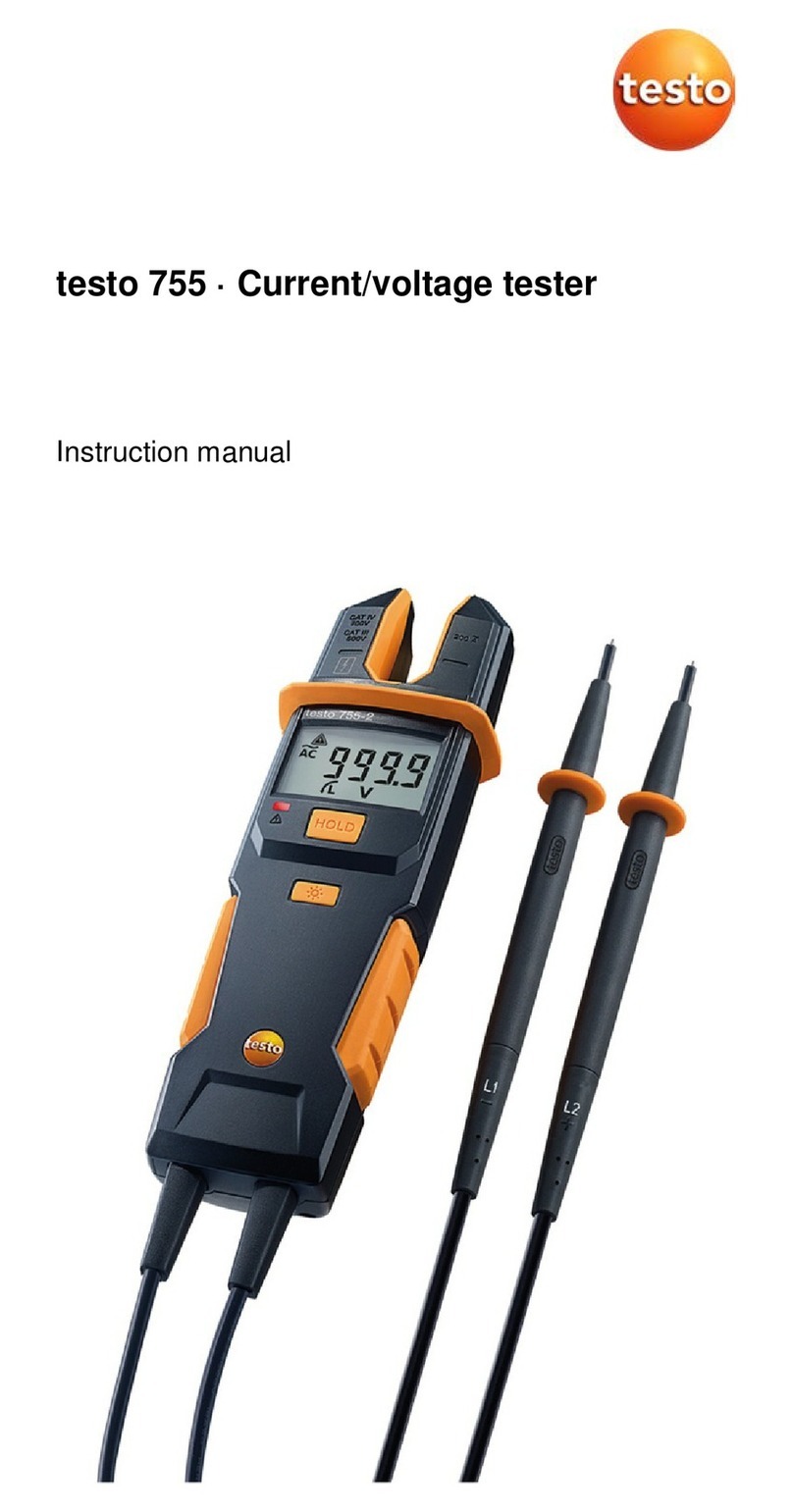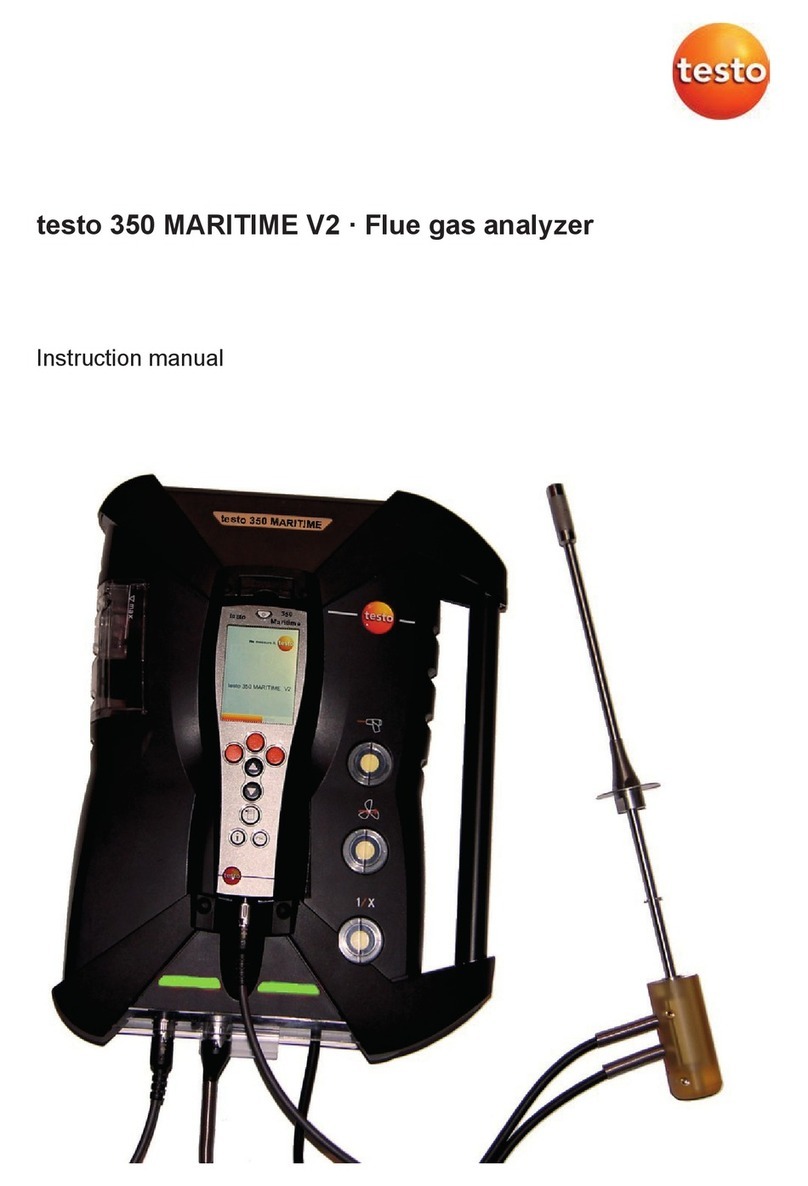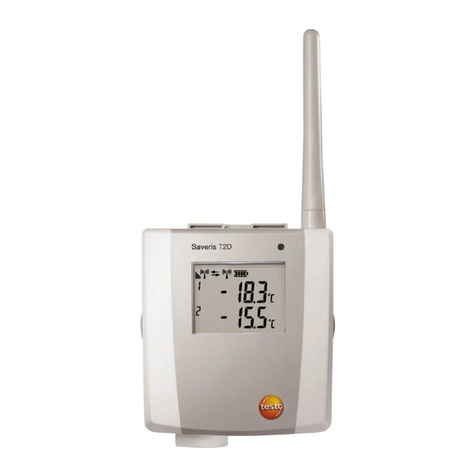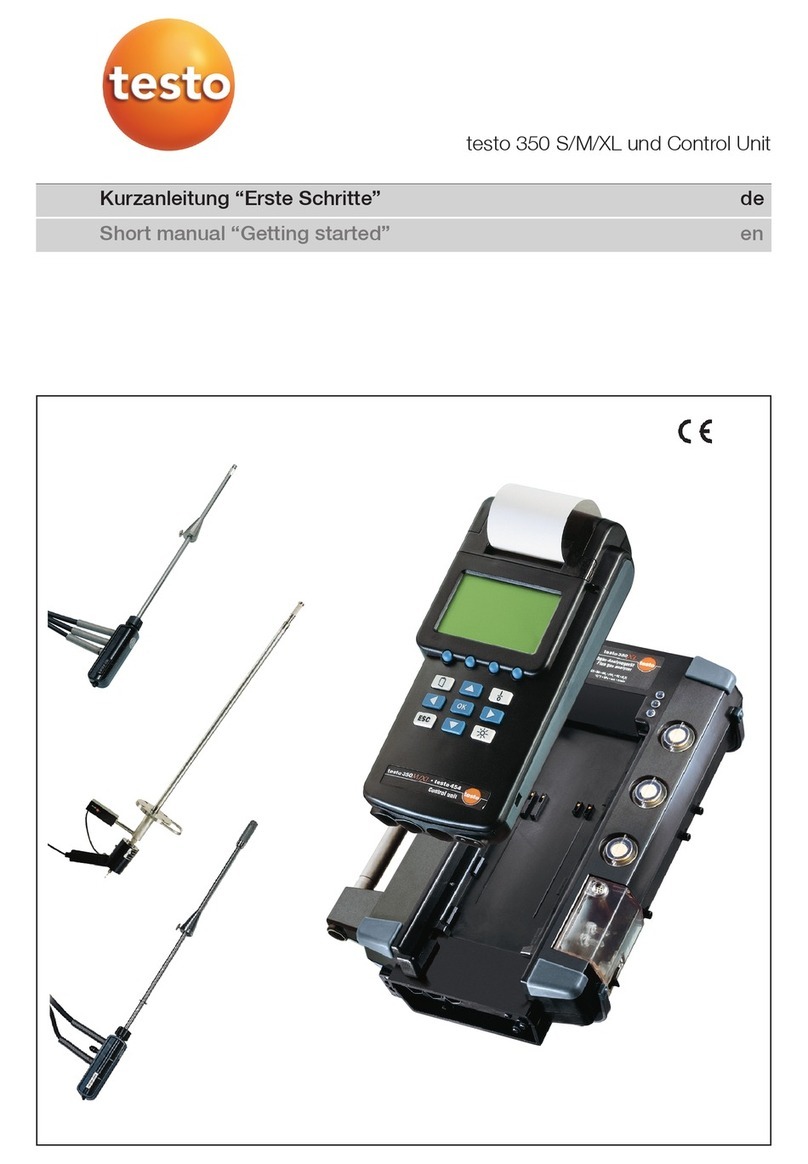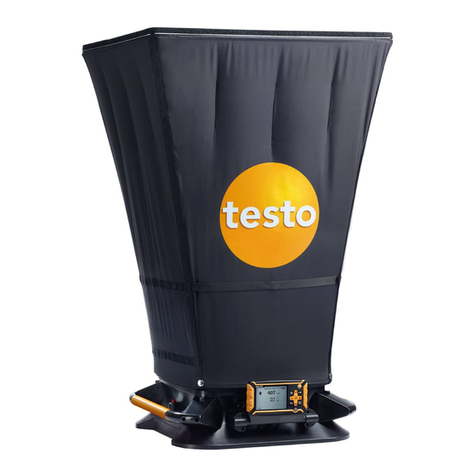3 Specifications
6
Pos: 7/TD /Überschrift en/2.2 Sicherheit gew ährleisten @ 0\mo d_1173780783960_ 79.docx @ 366 @ 2 @ 1
2.2. Ensure safety
Pos: 8/TD /Sicherh eit undUmw elt/Sicherheit g ewährleisten/G erätb ei Beschädigung en nichti n Betrieb nehmen @ 0\mod_1186985 945375_79.docx @ 2252@ @1
> Do not operate the instrument if there are signs of damage at
the housing, mains unit or feed lines.
Pos: 9/TD /Sicherh eit undUmw elt/Sicherheit g ewährleisten/K eineM essung an span nungsführenden Teil en@ 0\mod_11756925 64164_79.docx @ 592 @ @ 1
> Do not perform contact measurements on non-insulated, live
parts.
Pos: 10 /TD/ Sicherheit u nd Umw elt/Sicherheit g ewährleis ten/Nicht mi t Lös ungsmittel nl agern @ 0\mod_117569 2375179_ 79.docx @ 583@ @ 1
> Do not store the product together with solvents. Do not use any
desiccants.
Pos: 11 /TD/Sicher heitu ndUm welt/Sicherh eitg ewährleisten/N ur beschriebene Wartung sarbeiten durchfü hren @ 0\mod_11 75692705195_79. docx @ 601 @ @ 1
> Carry out only the maintenance and repair work on this
instrument that is described in the documentation. Follow the
prescribed steps exactly. Use only original spare parts
from Testo.
Pos: 12 /TD/Sicher heitu ndU mwelt/Sicherh eitg ewährleisten/vor Or tg ültige Sicherheits bestimmungen beac hten @ 0\mod_118 6997107328_79.d ocx @ 2298 @ @ 1
> Dangers may also arise from the systems being measured or
the measuring environment: Note the safety regulations valid in
your area when performing the measurements.
Pos: 13 /TD/Überschriften/ 2.3Umw elts chützen @ 0\mod_117 3780843645_79. docx@ 37 5@ 2 @ 1
2.3. Protecting the environment
Pos: 14 /TD/Sicher heitu ndUm welt/Umw eltsch ützen/Akkus/Bat terien entsorgen @ 0 \mod_117569363 7007_79.docx @ 619 @ @ 1
> Dispose of faulty rechargeable batteries/spent batteries in
accordance with the valid legal specifications.
Pos: 15 /TD/Sicher heitu ndUm welt/Umw eltsch ützen/Produkt entsorg en @ 0\mod_11 73780307072_79. docx @ 357 @ @ 1
> At the end of its useful life, send the product to the separate
collection for electric and electronic devices (observe local
regulations) or return the product to Testo for disposal.
Pos: 16 /TD/Überschrif ten/3. Leistungsbeschr eibung @ 0\mod_ 11737747915 54_79.docx @ 301 @ 1 @ 1
3Specifications
Pos: 17 /TD/Leistungs beschreibung/V erwendung/testo 4xx/t esto 420 @ 17\mod_ 1425631595907_7 9.docx @ 209797 @ @ 1
The testo 420 is used for volume flow measurements (main
application), Pitot tube measurements and pressure measurements
for air conditioning and ventilation systems. Thanks to its
interchangeable flow hoods, the testo 420 can be used for air inlets
and outlets of various sizes.
The testo 420 can be connected to the additional testo Smart App
(Android/iOS) or the testo 400 via Bluetooth. This allows the
readings to be conveniently displayed on a tablet/smartphone or
the testo 400. Moreover, a measurement can be configured,
started, stopped and saved via the app/the testo 400.
